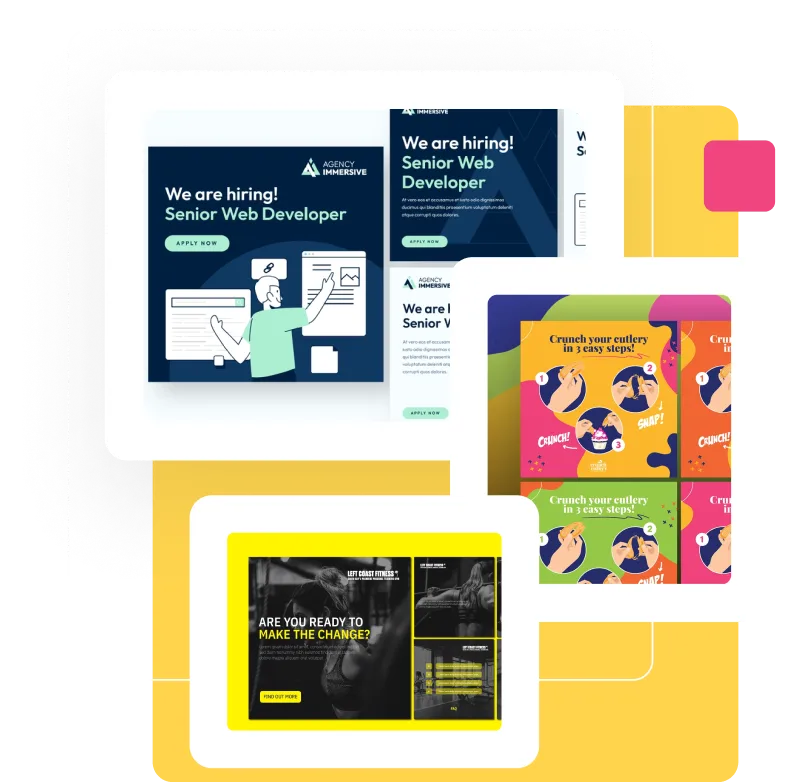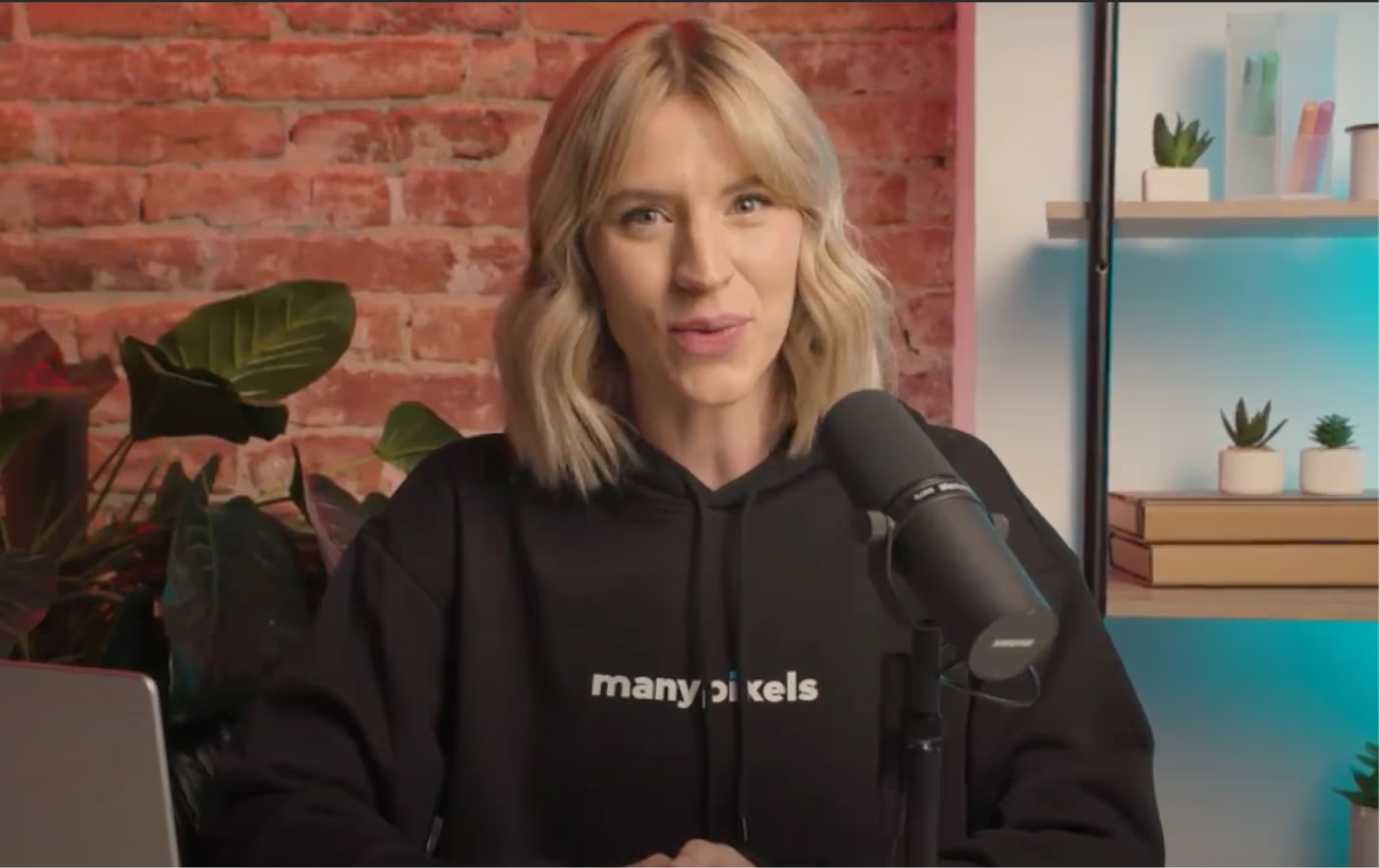

Social Media Ecommerce: 10 Ways to Advertise Your Store
Social media ecommerce advertising can be very effective - if you know how to do it right. Here are 10 kickass strategies to help you boost your online store!

.svg)
Whether you sell products directly on social media, or rely on it to get more customers to your ecommerce website- social media ecommerce marketing is worth learning about. Do you want to learn how to use social media for ecommerce marketing? Strap in as we go through some of the best tips and strategies!
You may have heard that there are close to five billion active social media users worldwide, with half of the world’s population using at least one social media channel. So, chances are that whatever you’re selling, your customers are on social media.
But beyond mere numbers, there are many reasons why you should use social media accounts to promote ecommerce. Let’s look at why that is.
{{SOCIAL_BANNER="/dev/components"}}
Why use social media marketing for ecommerce?
Social media is a direct link between you and your customers. That’s why building brand awareness on social media is an especially important aspect of digital marketing that you shouldn’t overlook.
However, selling products or services with the help of social media is also highly effective. Here are some of the reasons why.
Detailed audience targeting
Why is social media such an effective marketing tool? The biggest reason is the ability to reach a very specific target audience.
It’s much easier to reach your potential customers through social media than it is using SEO on your site. You can use audience specification with tools like Meta Ads Manager to promote your profile, or campaigns to people most likely to purchase.
Easy customer support
Did you know that 67% of people prefer to contact customer support through social media because they find it convenient?
Having stellar customer support can help you increase sales and build credibility. By making ecommerce and CS integrated through social media you can provide a seamless brand experience.
Social proof
It may sound like a washed out phrase, but the best brands on social media are those able to create a sense of community.
In this day and age, if you want to drive sales, you can’t bombard customers with promotional messages and empty slogans. Instead you can use social media to provide insight from real people that testify to the quality of your products or services.
User generated content is a popular strategy for building trust with prospective customers, as well as increasing your social media reach. You can also leverage influencer marketing, but you should be careful about picking your brand partner. Generally, it’s advisable to work with influencers that have a smaller, but more loyal audience.
Showcasing products
Many (if not most) social media platforms are highly visual. Instead of just one product page you might create on your website, social media allows you to show off your products in a number of different ways (e.g. with tutorials, eye-catching graphics, professional photos, etc.)
For example, I love Chambord Liquer’s elegant Instagram content. Essentially, it’s just the same liqueur bottle with some fancy cocktails. But the striking color palette, and different design details always help to create a unique and striking Instagram post design.


10 Social media ecommerce tips
You can use social media to sell your products (social commerce), promote them (social marketing), or to nurture sales prospects and drive traffic to your ecommerce site (social selling).
Whichever option you choose, you’ll need to know how to utilize social media in getting the right people interested in your products or services.
Here are 10 social media ecommerce marketing tips you should definitely make a note of.
Find the most effective platforms
Unsurprisingly, the first step to effective social media ecommerce marketing is to choose the most effective platform.
You should consider where your target customers hang out online. That way, you would know what platforms to focus on. You might be surprised to discover an underrated social media channel that can help boost your e-commerce sales.
For example, although Pinterest is only the 15th most popular social media platform, nearly half of its user base has an annual income of over $100,000, meaning there’s immense spending power to be harnessed.
On the other hand, if you want to sell through social media channels directly, you should utilize platforms that have this option, such as Facebook and Instagram.
Collaborate with micro-influencers
Working with micro-influencers is perhaps the most effective social media ecommerce strategy you can employ. According to recent research, micro-influencers have up to 60% higher engagement and 20% higher conversion rates than macro-influencers and celebrities.
Finding a micro-influencer in your niche means you’re promoting your products to the right target audience. They can also offer honest reviews of your products, which helps to build trust, as well as boost your social media ecommerce.
Create video content
It’s no secret that video content is ruling the social media marketing world right now.
A staggering 93% of companies have gained customers through a social media video. Half of social media prefer videos over every other type of content, while Instagram Reel reach for accounts up to 500 followers, is a whopping 892%, compared to 77% for images.
Of course, while the video format itself can help your social media ecommerce efforts, it’s also important to consider the type of content that will perform best.
Many cosmetics and makeup brands use videos to show their products in action - whether it’s a review by a customer or micro-influencer, or a very simple video like this one from Glossier, which shows the effectiveness of their face wash (without even having to show anyone’s face!).

Create engaging posts
How does social media help ecommerce businesses? To understand it, you ought to consider the different intentions people have on social media vs. ecommerce websites.
Yes, social media is increasingly being used for browsing and purchasing products. Still, since most people use social media daily, they don’t necessarily
In that respect, social media content ideas for ecommerce should be informative or shareable, rather than overly promotional.
Social media can also be a great way to get customer feedback that will help you improve your products and/or ecommerce efforts. For example, here’s a simple yet highly effective tactic - Twitter polls. Not only can they boost engagement rates, and help your social media performance, they’re also a way to understand your customers’ needs and preferences, and improve your offer.
Post user-generated content
User-generated content is the easiest content for ecommerce.Why? It’s free and it’s effective.
The prospect of user-generated content entices users to publish your brand in the hopes of being featured on your social media pages. And it works as free advertising for you. On top of that, UGC also helps to build trust with prospective customers. What’s not to love!
One of the most effective UGC campaigns is Asos’ #AsSeenonMe, where users post photos wearing their Asos purchases. You can see how enticing this would be for budding fashion influencers, or anyone wanting to brag about their new look. On the other hand, it’s a fantastic way for the fashion brand to promote its products more widely.

Tell a story
As we mentioned, people love honest and authentic brands. So, go out there and tell your story!
This is where social media and ecommerce really go hand-in-hand. While most people won’t be bothered to visit the About Us page on your website, creating some BTS social media content, or introducing members of your team can really help personalize your brand and build stronger connections with your client base.
For example, Intel regularly features some of their employees and their stories on social media. It’s the type of content you probably wouldn’t bother reading on a website, but social media is a different playing field.


Run a contest or promotion
Contests are an excellent method to spread the word on what you're offering, drive traffic to your online store, and increase your social media followers.
Note that some websites have specific rules for holding out contests, so make sure that you know these before starting a contest.
Ensure that you're offering one of your products as a prize and then announce it on all social media platforms you use. Alternatively, you can also partner up with a brand in a similar industry or niche, to create contests that are relevant to both of your target markets. This can be hugely beneficial for both your social media and ecommerce - higher reach, and potentially tapping into a whole new market.
Try paid advertising
Launching ads on social media is undoubtedly one of the most important, especially if you're an e-commerce company.
Social media ads allow you to boost your site traffic and sell more products as long as you link them with an enticing and highly engaging landing page.
When executed correctly, social media ads can be cost-effective. That is because you can deliver ads of your products to the feeds of your most qualified customers.
Provide customer support through social media
Did you know that 80% of US consumers use social media to engage with brands? And over 90% of customers are likely to become customers if they get an answer to their questions on social media?
This is definitely one of the most vital ways in which social media and ecommerce are connected. While it’s also fine to implement customer support tools on your ecommerce website (e.g. a chatbot), customers expect brands to provide customer support through social media.
Utilize data
The social aspect of social media is usually the first thing marketers think of. Creating a community, providing effective customer service, and building trust are all important. Still, social media is a powerful marketing tool for another reason: data.
Whether we like it or not, social media platforms collect and process our data. So, if you’re wondering “how does social media help ecommerce”, you shouldn’t overlook using social media insights to improve your ecommerce performance.
This might mean a deep dive into your audience demographics, or their behavior, including website clicks, mentions, shares, etc. At the end of the day, this will help you understand how social media and ecommerce are linked, and whether social media is indeed a tool that’s useful for promoting your ecommerce store.
Final remarks
We hope this gives you a few ideas on how to use social media for ecommerce. Before you advertise ecommerce websites on social media, make sure the website itself is looking and working properly - you don’t want to bring a surge of traffic onto a buggy website.
Finally, while tips and technicalities can help you increase your reach, it’s the content that ultimately makes or breaks your conversion rates.
Whether you need great social media design, or a revamp of your ecommerce website - we can help! Get in touch with us to see how our team of ecommerce design experts can help you reach new heights on social media and your online store!
Discover an array of captivating voices and expert insights as our guest writers grace the pages of the Manypixels blog. From seasoned industry veterans to emerging talents, their thought-provoking articles will inspire and inform, enriching your reading experience.
A design solution you will love
Fast & Reliable
Fixed Monthly Rate
Flexible & Scalable
Pro Designers






.avif)
